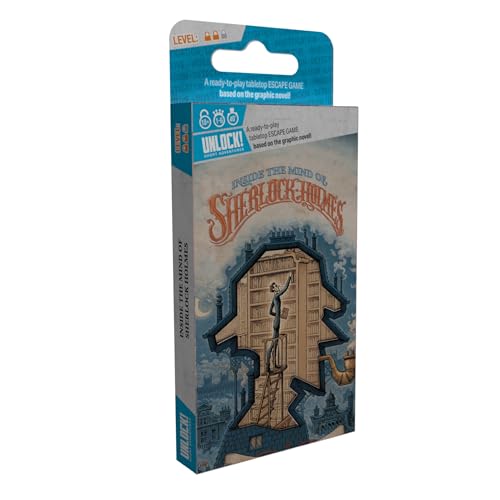There’s something undeniably luxurious about damask fabric. Its intricate patterns and rich texture can elevate any sewing project, whether you’re crafting elegant curtains or a stunning dress. I’ve always been drawn to its timeless appeal and versatility, and I can’t wait to share my tips for working with this beautiful material.
Overview of Damask Fabric
Damask fabric is known for its luxurious appeal and intricate designs. This versatile fabric adds elegance to various sewing projects, elevating them to new heights.
History and Origin
Damask fabric originated in the Middle East around the 6th century, named after the city of Damascus. Weavers initially crafted it from silk, later incorporating linen and cotton. Historically, damask was prized for its durability and intricate reversible patterns. Its use in royal garments and luxurious home decor established damask as a symbol of wealth and sophistication.
Characteristics of Damask
Damask features several distinctive characteristics that enhance its appeal:
- Reversible Patterns: Damask displays intricate designs on both sides, enriching a project’s visual dimension.
- Rich Texture: The weaving technique creates a soft, luxurious feel that elevates garments and home textiles.
- Durability: The strong fibers contribute to the longevity of damask, making it suitable for upholstery and clothing.
- Versatility: Available in various materials, damask can serve many applications, from drapes to evening gowns.
- Elegant Appearance: The sheen of damask fabric results in a sophisticated look, fitting for both formal and casual settings.
Understanding these qualities helps in selecting damask for specific sewing projects, ensuring optimal results.
Tools and Materials Needed
When working with damask fabric, having the right tools and materials ensures a smooth sewing experience and high-quality results. Below is a list of essential items I recommend.
Sewing Machine and Accessories
- Sewing Machine: A reliable sewing machine, ideally one with adjustable stitch length and width, accommodates the unique properties of damask.
- Walking Foot: Using a walking foot helps prevent the fabric layers from shifting and ensures even feeding, which is crucial for maintaining damask’s intricate patterns.
- Straight Stitch Foot: This foot creates precise straight stitches, essential for achieving clean seams on damask.
- Pinking Shears: Employing pinking shears aids in finishing edges, reducing fraying, and preserving the fabric’s beauty over time.
Choosing the Right Thread and Needles
- Thread: Selecting high-quality polyester or cotton thread matches the fabric’s weight and texture, ensuring durability and a polished finish.
- Needles: Use a size 80/12 universal needle for medium-weight damask or a size 90/14 needle for heavier weights. These sizes handle the fabric’s intricacies effectively.
- Twin Needles: For decorative stitching or topstitching, consider twin needles; they create beautiful parallel lines that enhance the fabric’s elegant appearance.
By gathering these tools and materials, I set myself up for success when sewing with damask.
Preparing to Sew with Damask
Preparing to sew with damask requires attention to detail to ensure a seamless sewing experience. I focus on two key areas: pre-washing and ironing, as well as cutting techniques.
Pre-Washing and Ironing
Pre-washing damask fabric removes any chemicals, ensuring it’s clean and ready for use. I soak the fabric in cold water and hang it to dry, which helps maintain its vibrant colors. Ironing the fabric before cutting is essential for smooth, accurate measurements. I use a low steam setting to protect delicate fibers, pressing gently to avoid damaging the intricate patterns. Overall, this preparation not only enhances the fabric’s beauty but also prevents unwanted shrinkage after sewing.
Cutting Techniques
Cutting damask fabric requires precise techniques to maintain the integrity of the patterns. I use a rotary cutter for clean edges and a cutting mat for accuracy. Aligning the fabric’s pattern ensures that the pieces match correctly in the final project. I also recommend using weights to hold the fabric in place while cutting, preventing any shifting. Accuracy is key, as any irregularities in cutting can affect the overall look of the finished item. By taking these steps, I ensure that my projects with damask fabric turn out beautifully.
Sewing Techniques for Damask
Sewing with damask requires specific techniques to highlight the fabric’s luxurious qualities. Understanding these methods enhances the quality and appearance of your projects.
Basic Stitching Tips
- Use A Straight Stitch: A straight stitch works best for most damask fabrics. It secures seams securely and maintains fabric structure.
- Sew With A Walking Foot: A walking foot minimizes fabric shifting while sewing. It ensures even feeding, which is crucial for preserving damask’s intricate patterns.
- Select The Right Needle: Use a universal or microtex needle for damask. These needle types penetrate the fabric smoothly, reducing snagging or damage.
- Test Stitches: Always test stitch on a scrap piece. This helps adjust tension and stitch length while observing how the fabric reacts.
- Use Matching Thread: Choose thread that matches or complements the damask. This choice enhances the finished look and conceals seams effectively.
Advanced Techniques for Intricate Designs
- Incorporate Twin Needles: Twin needles create parallel rows of stitching, adding a decorative touch. They work particularly well for hems and embellishments on damask.
- Explore Multi-Stitch Patterns: Use your sewing machine’s decorative stitch options. These patterns can accentuate damask’s textures and enhance its luxurious appeal.
- Master Appliqué Techniques: Applying additional fabric segments can add dimension and complexity to your projects. Use fusible webbing to secure the appliqué before stitching.
- Experiment With Embroidery: Embroidering on damask can highlight its patterns. Choose thread colors that contrast with the fabric for a striking effect.
- Utilize Bias Tape: Bias tape adds structure to edges and creates neat finishes. Consider using it to accentuate contours in your damask projects.
By employing these techniques, I can enhance my sewing experiences with damask and take my projects to new heights. Each method showcases the fabric’s rich texture and beautiful designs.
Project Ideas using Damask
Damask fabric brings elegance to any project. Here are some creative ideas to incorporate it into your sewing endeavors.
Home Decor Projects
- Cushion Covers: Create stunning cushion covers to elevate your living space. Use damask for a luxurious touch on sofas or beds.
- Table Runners: Design a beautiful table runner that serves as an eye-catching centerpiece. Choose rich colors to match your dining room decor.
- Curtains: Sew curtains that enhance natural light while providing privacy. Damask offers a refined look for any room.
- Tote Bags: Whip up stylish tote bags for shopping or outings. The durable quality of damask makes it perfect for everyday use.
- Wall Art: Craft wall hangings or fabric panels. Frame sections of damask to create unique art pieces.
Fashion Items and Accessories
- Dresses: Make dresses that stand out with their luxurious texture. Damask works beautifully for both casual and formal wear.
- Skirts: Sew structured skirts that highlight the fabric’s intricate patterns. A-line silhouettes enhance the elegant drape of damask.
- Jackets: Design tailored jackets that add sophistication to any outfit. Consider contrasting lining for a striking effect.
- Headbands: Create chic headbands or hair accessories. Damask adds a touch of luxury to any hairstyle.
- Scarves: Sew lightweight scarves that can be worn year-round. The rich patterns elevate simple outfits.
Using damask for these projects showcases its versatility and beauty, enhancing both your home and wardrobe.

Conclusion
Sewing with damask has been such a rewarding experience for me. Its rich texture and stunning patterns truly elevate any project. I hope you feel inspired to dive into your own sewing adventures with this luxurious fabric.
Whether you’re creating beautiful home decor or stylish garments I can’t wait to see how you bring your ideas to life. Remember to take your time with the preparation and enjoy the process. With the right tools and techniques you’ll discover just how versatile damask can be. Happy sewing!

















